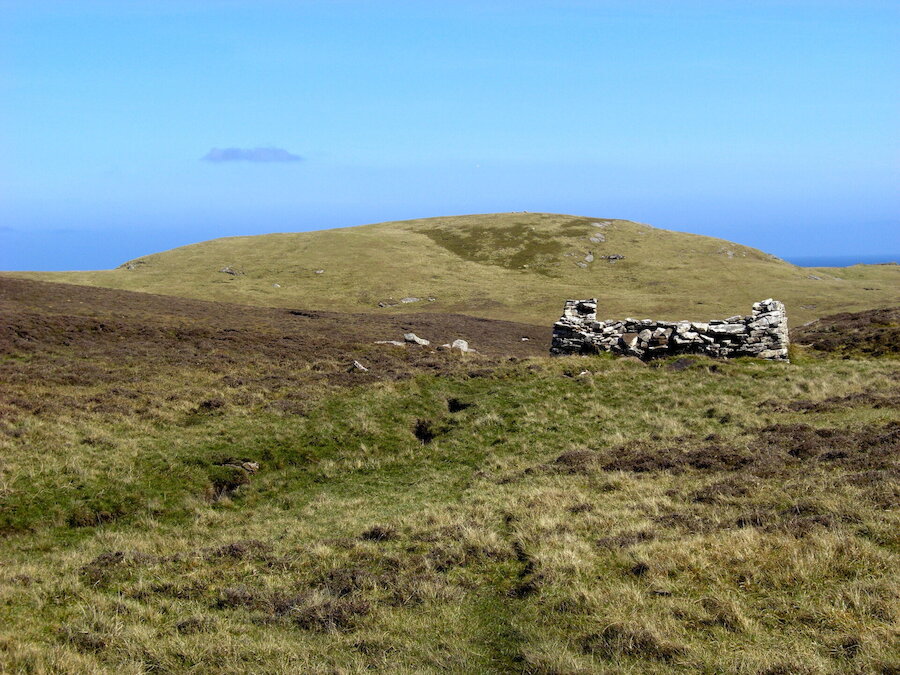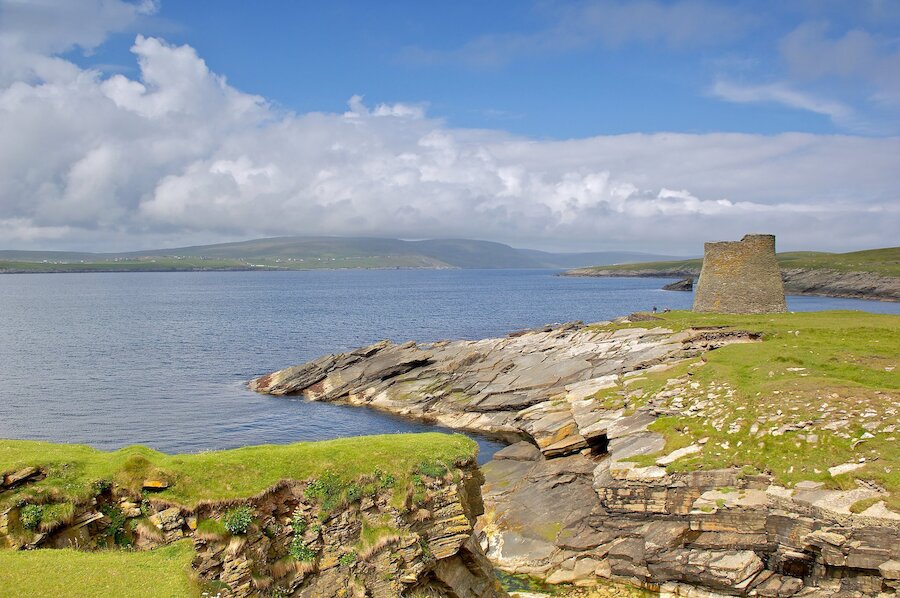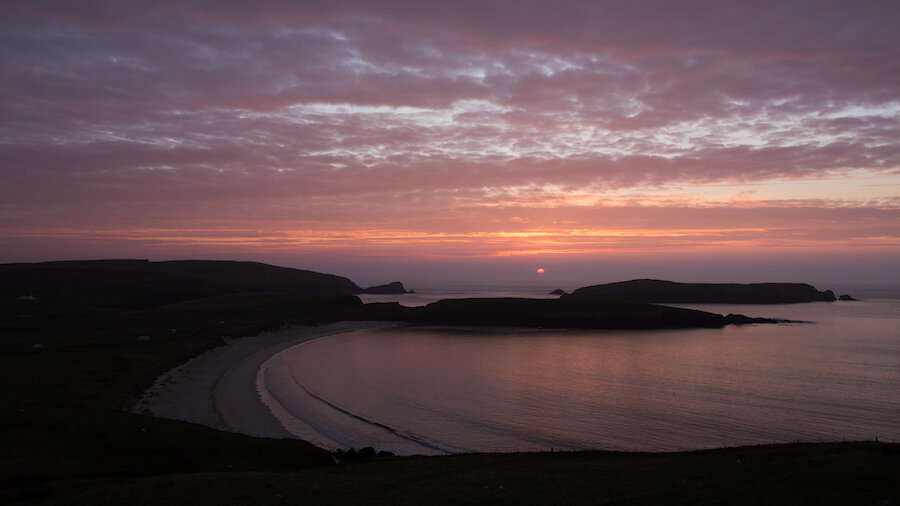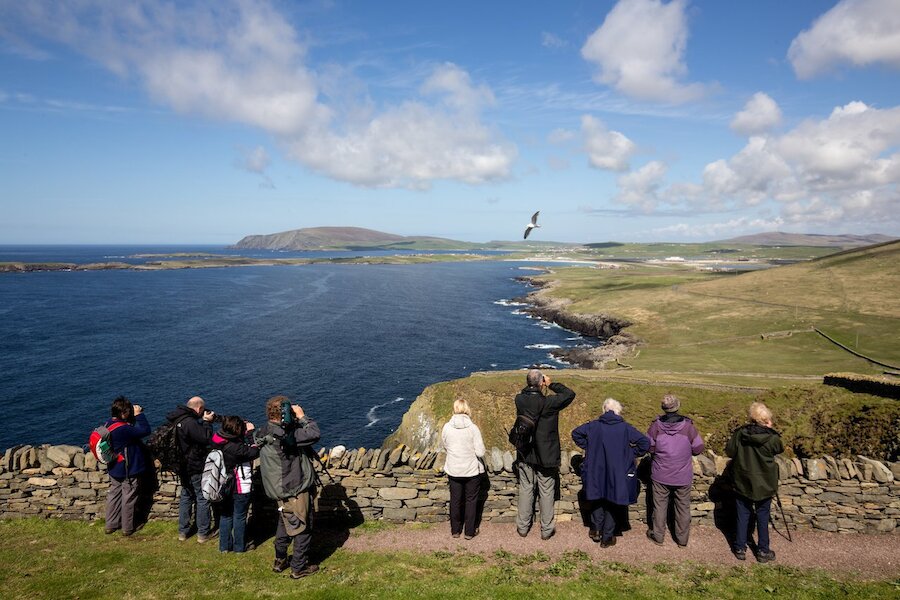From Lerwick, take the south road through Sound, passing Tesco and Clickimin Broch onto the A970 towards Sumburgh.
Shetland's South Mainland is a long, narrow, sweeping peninsula that runs twenty-five miles south from Lerwick. The A970, Shetland's artery road that runs north to south, heads to Sumburgh Airport at the southernmost point of Mainland Shetland.
Fladdabister
Seven miles south of Lerwick is Fladdabister, the first destination on the murder trail. Fladdabister has been inhabited since prehistoric times and takes its name from the Old Norse language previously spoken in Shetland – meaning the 'flat farm'.
The community is on the east side of the South Mainland and looks out across the North Sea. Seven miles south of Lerwick, turn off the main A970, signposted Fladdabister. This is a single-carriageway loop road that comes out at Cunningsburgh a few miles south.
Follow the road for around a mile, dropping down the brae into Fladdabister itself. As you come to the corner before the downhill, you'll enjoy excellent views across to the island of Bressay and several picturesque abandoned houses with commanding views out to sea. This fascinating seascape gives a good indication of Shetland's coastline as a whole – with its numerous 'indents' and geos. The coastline itself is some 1,000 miles (1,700 km) long!
As the ground levels off at the foot of the valley, you'll pass a layby with interpretation panels after the beautiful ruins of a crofting township. Stop here and take a walk towards the lime kilns depicted on the interpretation boards.
Fladdabister is a fertile limestone valley. The lime here was quarried throughout the 19th century and sold for use in the building trade and as fertiliser to improve peaty, acidic soils – prevalent throughout Shetland. Between 30 and 40 barrels of lime were harvested each year. Quarried limestone was burnt between layers of peat to extract the lime – you can see the areas around the kilns have been extensively quarried.
The lime kilns at Fladdabister were used during series three – this is where a dead body was found.
During the 19th century, Shetland was very much an economy of subsistence crofters and fishermen. It was a barter economy where tenants paid their landlords using goods such as knitwear and fish. In exchange, the value – set by the laird – was offset against the tenant's rent. Through this barter system, they could also obtain 'luxury goods' such as tea and sugar from the laird's shop. It was more or less a cashless economy – and one that very much lay in favour of the landlord who controlled the market and prices. The sale of barrels of lime would have provided a welcome cash bonus to the cash-poor crofters who lived in the area here.
Throughout the summer, the road verges are awash with a stunning array of wildflowers that spring up in the fertile limestone ground – so beautiful is this scene that it inspired local poet Rhoda Bulter's poem, Fladdabister.





